Kelp farming is a relatively new industry but has great potential due to its many benefits. Kelp is a fast-growing plant that requires little input once established. It also provides several ecosystem services. Kelp grows in cold, shallow waters. It is an important source of food and shelter for many marine animals and plays a vital role in the marine ecosystem. Kelp can be harvested for food, fertilizer, or even fuel.
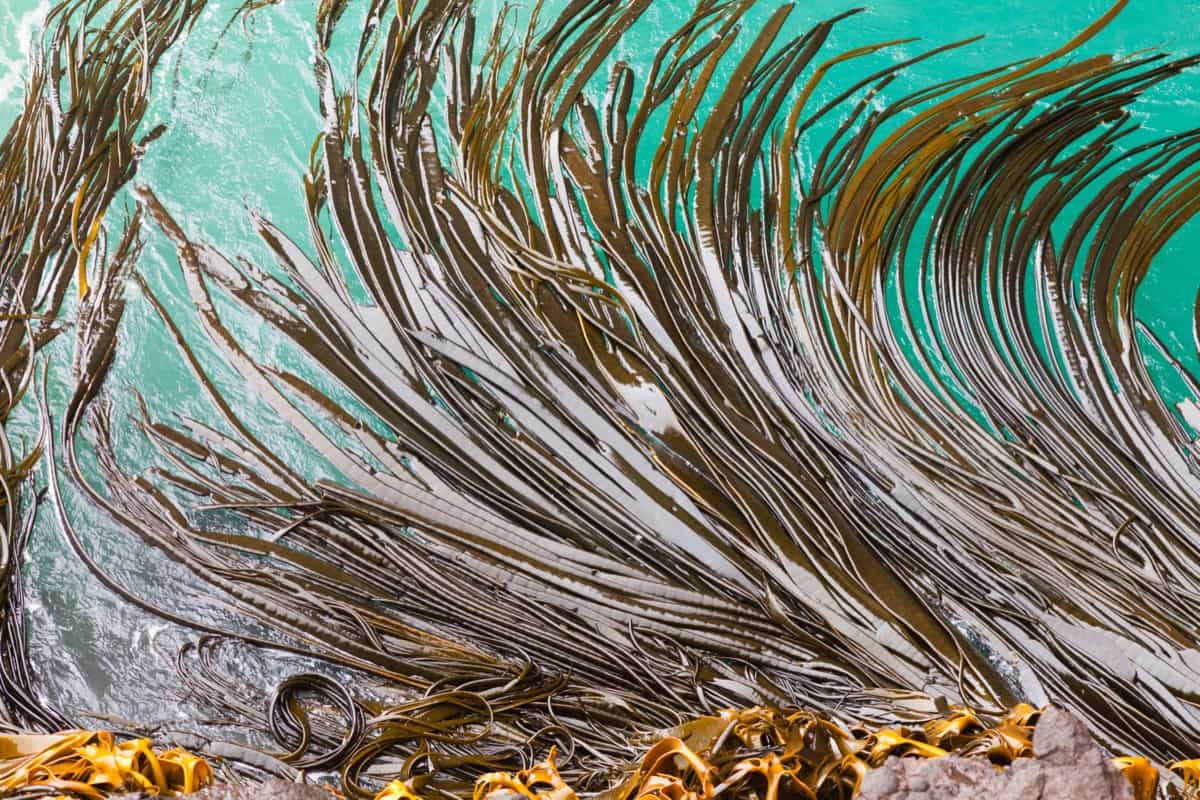
A Step-By-Step Guide to Kelp Farming
Benefits of Kelp Farming
- Kelp farming is environmentally friendly, as Kelp absorbs carbon dioxide and helps to reduce ocean acidification. Kelp farms can also help to improve water quality by filtering out nutrients and bacteria. In addition, Kelp farming provides a source of sustainable income for coastal communities.
- Kelp farming is relatively simple and requires minimal inputs. Kelp seeds are attached to ropes or nets and deployed in the ocean. The Kelp will grow rapidly, reaching maturity in just a few months. Once it has reached the desired size, it is harvested and processed into various products.
- Kelp is a fast-growing plant that can reach up to 30 meters in length. It is a nutritious food source and an important ingredient in many products.
- One main benefit is that Kelp grows very quickly. Kelp can grow up to two feet per day. This makes Kelp an ideal crop for farmers who want to maximize their yield.
- Another benefit of Kelp farming is that it requires few inputs. Kelp can be grown in nutrient-rich waters without artificial fertilizers or pesticides. This makes Kelp farming an environmentally friendly way to produce food and other products.
- Kelp farming is still in its early stages, but it has great potential as a sustainable food production system that can help to feed the world’s growing population without putting additional strain on our limited resources.
In case you missed it: Growing Buffalo Grass from Seed: A Step-By-Step Production Guide
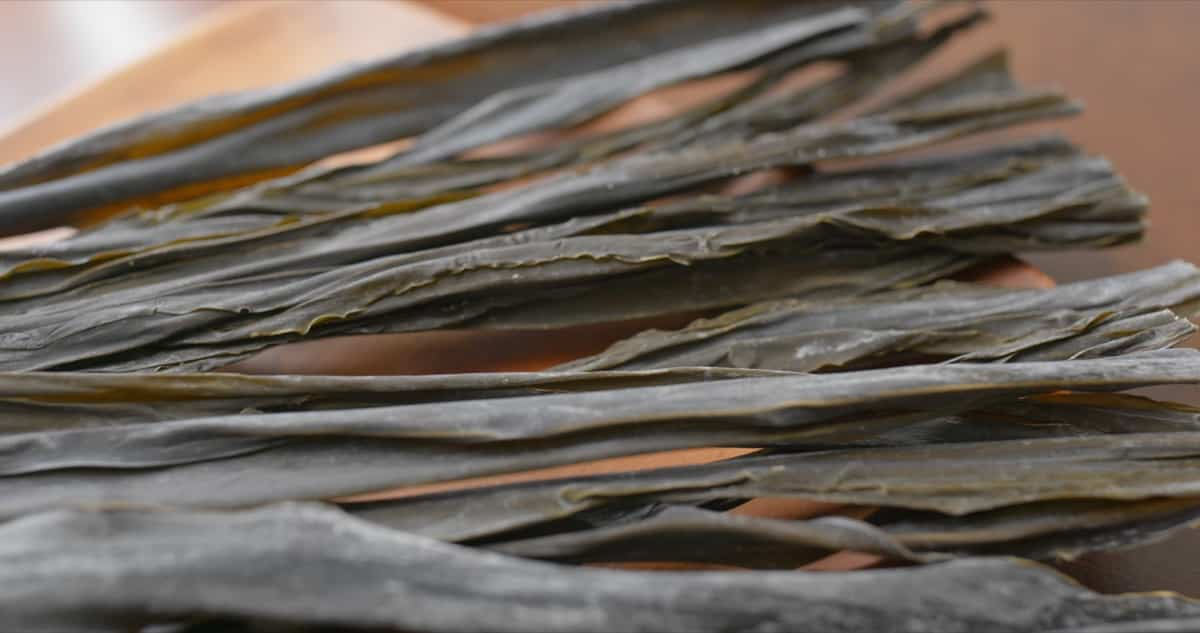
Is Kelp Farming Profitable?
Kelp farming is a type of aquaculture used to cultivate and harvest Kelp. Kelp is a seaweed growing in shallow, nutrient-rich saltwater habitats. Kelp farming can be profitable if done correctly. To maximize profits, farmers must carefully consider the costs of setting up and maintaining their farms, as well as the market value of Kelp.
The most important cost of Kelp farming is acquiring and maintaining the necessary equipment. This includes everything from nets and ropes to boats and harvesters. Kelp farms are also typically located in remote areas so transportation costs can be significant.
How to Farm Kelp?
Kelp farming is a type of aquaculture in which Kelp, or brown algae, is cultivated commercially. Kelp can be used for various purposes, such as human consumption, animal feed, and fertilizer. There are several different methods of Kelp farming, but the most common method is the long-line method. This method attaches Kelp plants to a line anchored to the seafloor. The Kelp plants are then allowed to grow until they reach maturity, at which point they are harvested.
Kelp farming is a relatively new industry, but it has already begun to impact the environment positively. Kelp cultivation can help restore essential nutrients to depleted ocean areas. It can also help to reduce greenhouse gas emissions by providing an alternative source of food and fuel.
The first step in Kelp farming is to select a suitable site. The site must have adequate water depth, good water quality, and enough light exposure for the Kelp to grow properly. Once the site has been selected, the next step is to prepare the area for cultivation. This may involve clearing debris, adding nutrients to the water, or installing supports.
Main Methods of Installing Test Plants for Kelp Farming
- Line method: A loop or knotted monofilament line or polyethylene rope is tied end to end of two mangrove stakes installed 12 meters apart. Test plants are then tied to the loop with corresponding numbered rubber sandal tags for identification.
- Net method: A monofilament or polyethylene net measuring 2.5 meters wide by 5 meters long with a mesh measurement of 60 cm is stretched out between two mangrove stakes, which are again installed 12 meters apart from each other. Test plants are then tied to the net with corresponding numbered rubber sandal tags for identification.
In case you missed it: A Comprehensive Guide to Sustainable Shrimp Farming
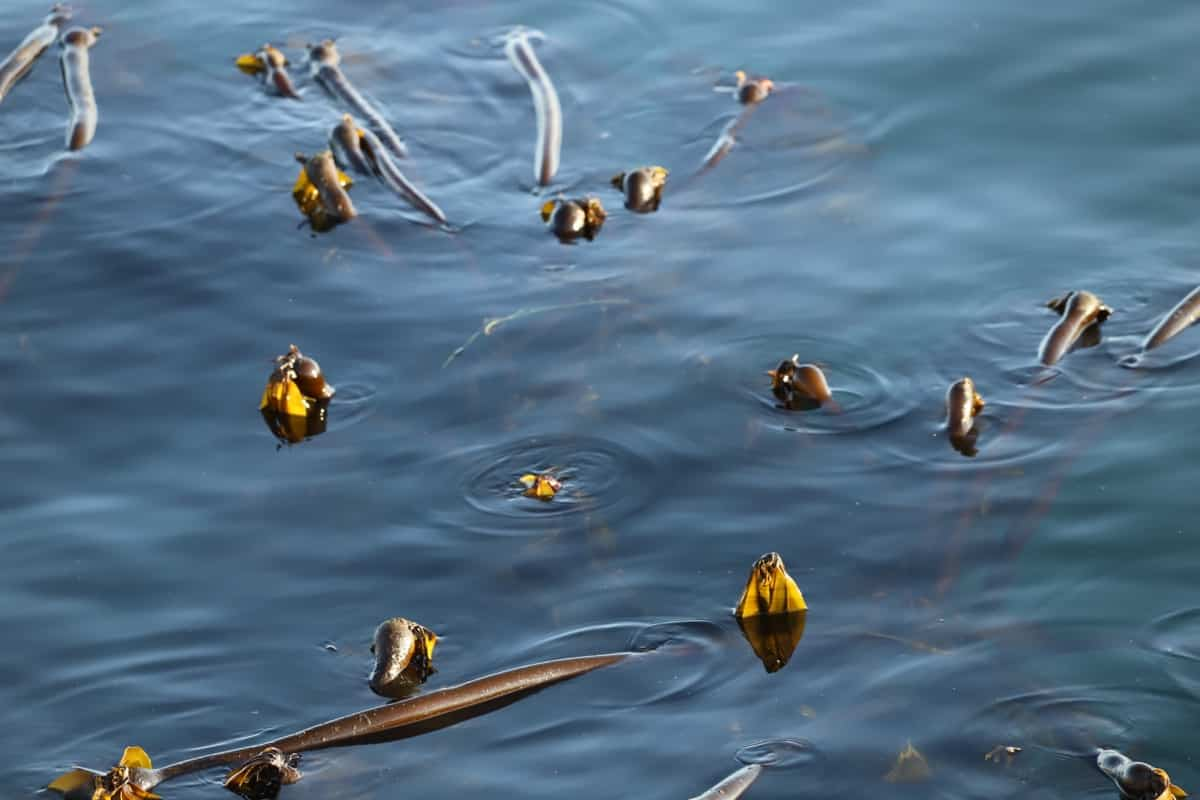
Farm Site Selection for Kelp Farming
Finding the perfect location for your Kelp farm is important to the success of your operation. Some factors important when selecting a farm site include water depth, wave energy, water quality, and proximity to markets.
- Water Depth: Kelp requires deep water to grow, so you’ll need to find a location with depths of at least 50 feet.
- Wave Energy: Too much wave energy can damage or uproot Kelp plants, so you’ll want to find a location with moderate wave action.
- Water Quality: Kelp needs clean, nutrient-rich water to thrive, so you’ll want to avoid locations with polluted waters.
- Proximity to Markets: You must be close enough to markets (restaurants, seafood processors, etc.) to sell your product.
Species Selection for Successful Kelp Farming
There are many species of Kelp, but only a few are commonly farmed. The most common species are sugar Kelp (Saccharina latissima), horsetail (Laminaria digitata), and winged Kelp (Alaria esculenta). Sugar Kelp is the sweetest and most popular type of Kelp. It is used in desserts, soups, and other dishes. Horsetail is a type of Kelp that is often used in Asian cuisine. It has a slightly bitter flavor. Winged Kelp is the most common type of Kelp in North America.
Different Methods of Kelp Cultivation
Kelp cultivation is the process of farming Kelp, a type of seaweed. There are two main methods of Kelp cultivation: the hanging-Kelp rope method and the horizontal Kelp rope method.
- Hanging-Kelp rope method: It is also known as the single-raft method. This method involves attaching Kelp plants to a floating raft using ropes. The Kelp plants are then allowed to grow and propagate freely.
- Horizontal Kelp rope method: It is also known as the double-raft method, is similar to the hanging-Kelp rope method, except that two rafts are used instead of one. The Kelp plants are again attached to the rafts using ropes but are grown horizontally to receive more sunlight exposure.
Tips for Successful Kelp Farming
1. Choose the right location – Kelp thrives in cold, nutrient-rich waters. Look for a site with clean water and plenty of sunlight. Kelp farming can be an environmentally friendly way to produce food and other products while providing numerous ecosystem services. To be successful, Kelp farmers must have a good understanding of Kelp biology, ecology, and the local environment. Kelp grows best in areas with strong currents and plenty of sunlight. Farmers need to select their farm sites to maximize growth and yield carefully.
In case you missed it: Sorghum Farming in the Philippines: A Step-by-Step Production Guide
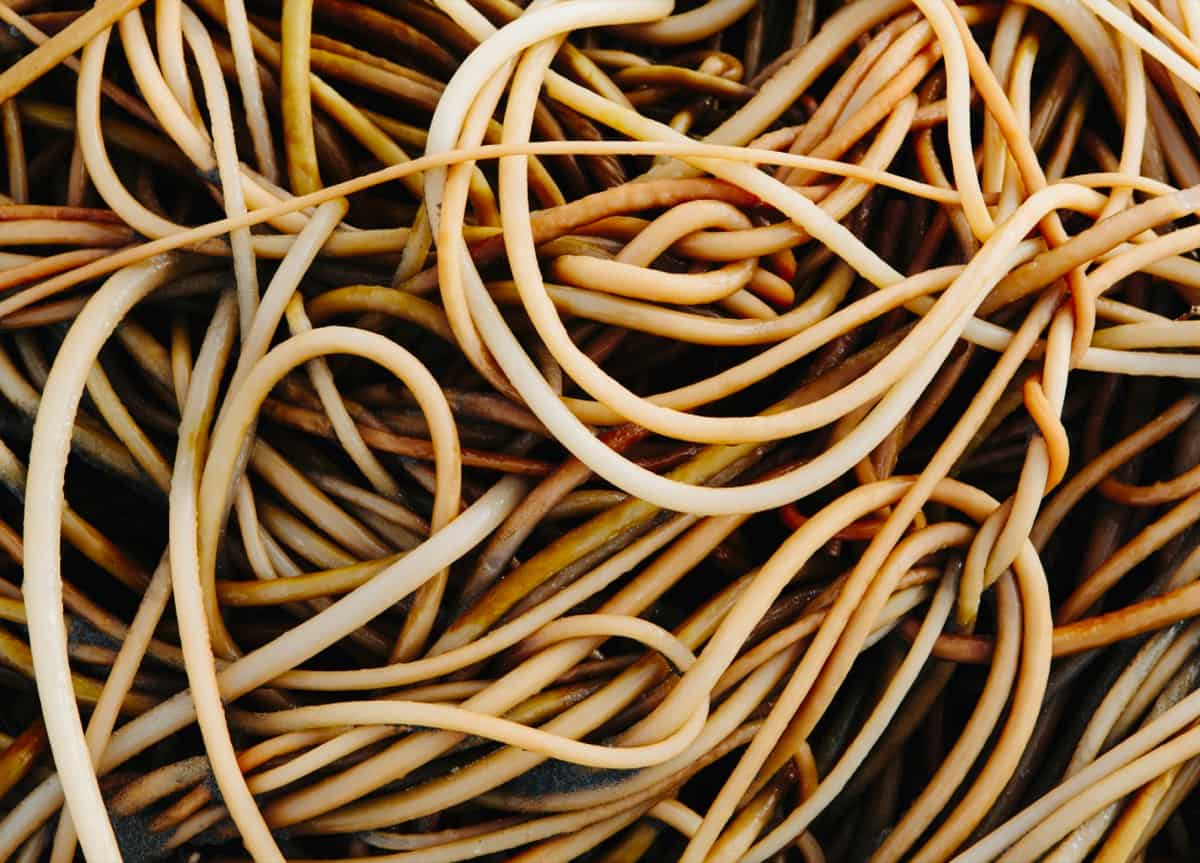
2. Start with healthy Kelp plants – You can grow your Kelp from spores or purchase young plants from a nursery. Make sure the plants are disease-free and have strong roots. It is important to start with healthy plants grown in good conditions. Kelp seeds are available from commercial suppliers. You can also collect them from wild populations. Once you have obtained your seeds, they should be sown in an area with high water quality and plenty of light.
3. Choose the right species of Kelp – There are many different species of Kelp, each with its own set of characteristics. Some species grow rapidly and can reach large sizes, while others are more slow-growing and compact. Some species are more tolerant of different environmental conditions than others. Choosing a species well-suited to your farm area’s conditions is important.
4. Manage your nutrients – Kelp is a nutrient-hungry plant, and farmers must carefully manage the nutrient levels in the water column. Too much or too little nutrients can negatively impact Kelp growth.
5. Be aware of pests and diseases – It is susceptible to pest and disease problems like any other crop. Farmers must be on the lookout for these threats and take steps to control them when necessary. Choosing an appropriate site with clean water and plenty of sunlight is important to farm Kelp successfully. The Kelp plants will also need regular maintenance to remove debris and prevent them from becoming tangled.
6. Harvest carefully – Harvest Kelp during the summer months when it is at its peak growth. Using scissors or a sharp knife to cut the stalks near the base, be careful not to damage the plant. Process Kelp immediately after harvesting to prevent it from deteriorating. Rinse the Kelp in fresh water and then dry it on racks or screens in an airy, shady place.
In case you missed it: How to Craft a Successful Vertical Farming Business Plan
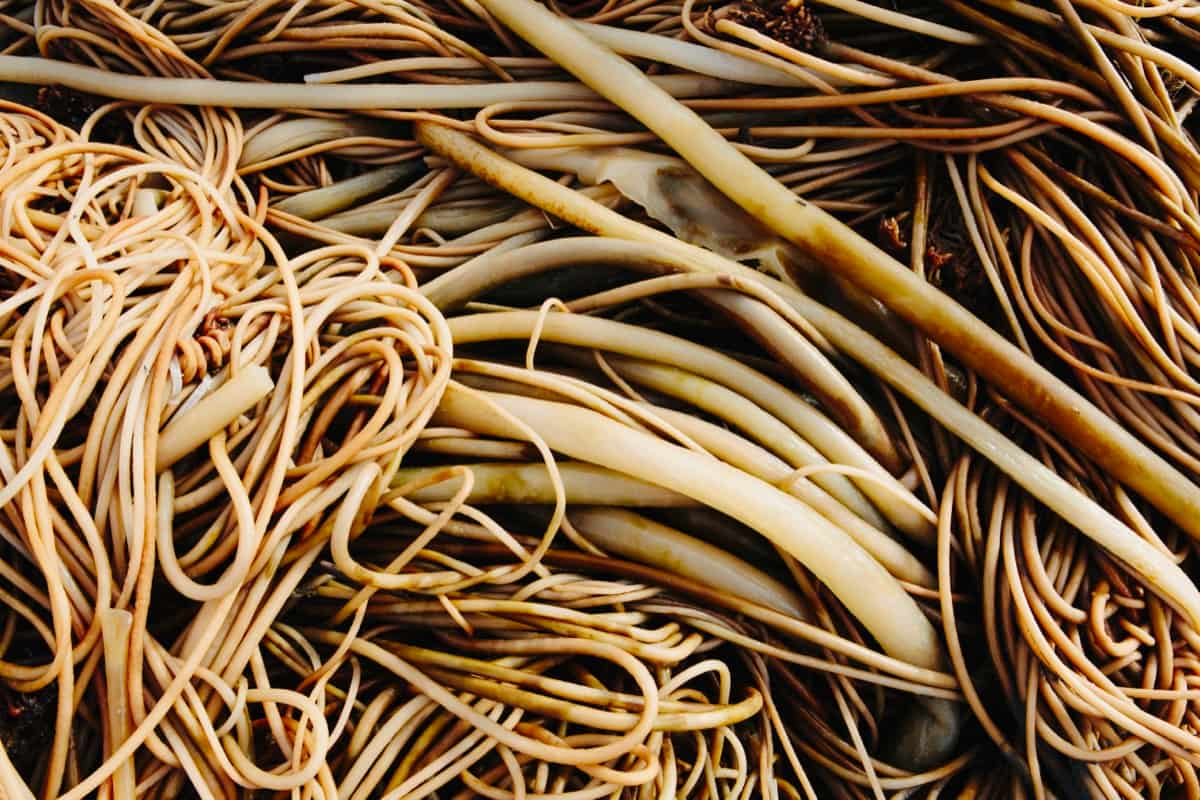
Many Ways to Design a Kelp Farm
In some countries, the farm consists of vertical ropes suspended from a buoy/long line system. In others, it consists of submerged parallel long lines.
Vertical Rope Farms
There are many ways to design a Kelp farm. In some countries, the farm consists of vertical ropes suspended from a buoy/long line system. This type of farm is relatively easy to set up and maintain, offering a high level of flexibility regarding Kelp density and placement. However, it can be vulnerable to strong currents and waves, damaging or even breaking the ropes.
Vertical rope farms are usually located in sheltered waters with little wave action and moderate currents. The ropes are anchored to the seafloor and extend upward to a buoy or long-line system. Seaweed plants (such as Kelp) are attached to the ropes and grow vertically upward. They are harvested by hand or with a boat-mounted cutter bar when they reach the surface.
Parallel Long Lines
This type of farm is more difficult to set up and maintain but much more resistant to waves and currents. Additionally, this type of farm allows for a higher density of Kelp, which can benefit some applications. The design choice depends on many factors, including wave action, water depth, currents, and availability of land or space for farming. There are also some environmental considerations, like the impact on seafloor habitats and other marine life.
Submerged long-line farms are located in deeper waters with stronger currents. The long lines are anchored to the seafloor and extend horizontally parallel. Seaweed plants are attached to the lines and grow along them. When they reach their desired length, they are harvested by divers using hand-held cutting tools. The difference between the two methods is that the former can be harvested using a boat, while the latter must be harvested by diving.
When and How to Harvest Kelp?
The average Kelp plant weighs between 750 and 850 grams when it is ready to be harvested. Cut the plants at the base to harvest your Kelp with a sharp knife or scissors. Leave a few inches of stem so that the plant can regrow. Once the plants are harvested, they can be used fresh or dried later.
In case you missed it: Orchid Farming Business Plan: Strategic Changes for Increased Profitability
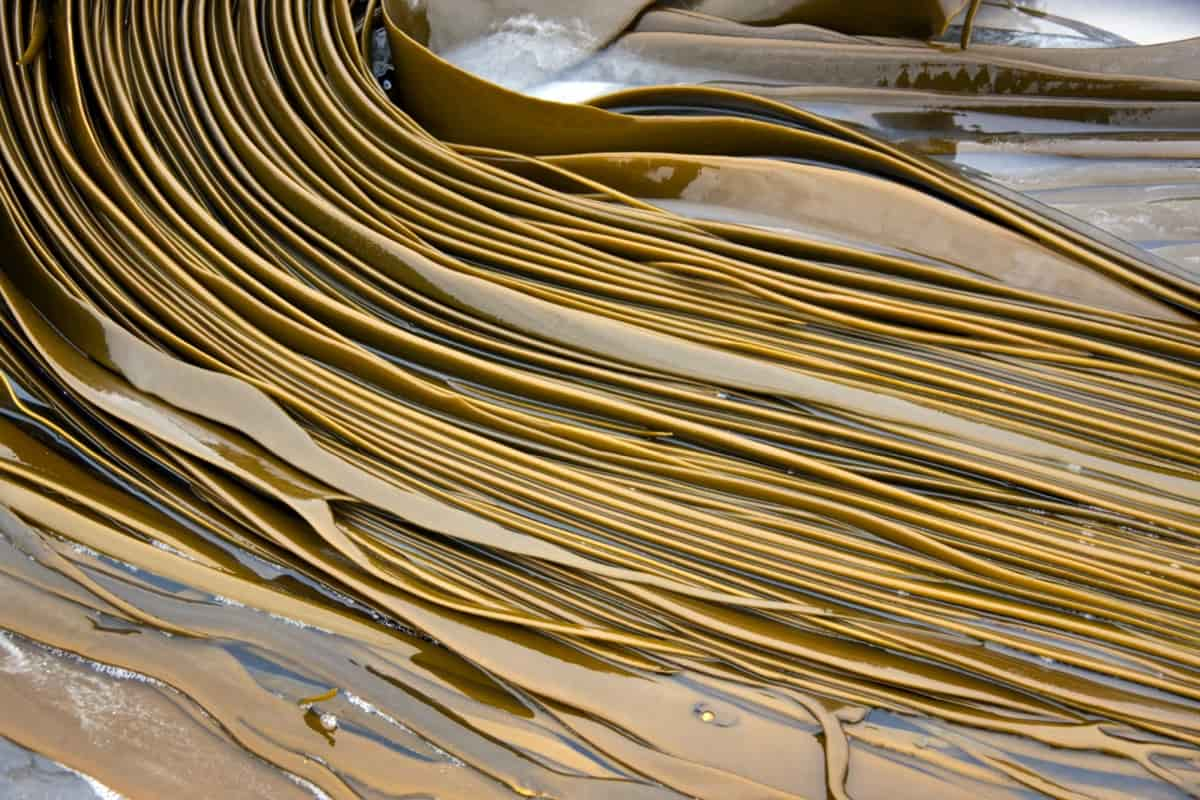
Maintenance Of the Kelp Farm
Kelp farming is a relatively new industry with a promising future. As Kelp grows quickly and can be harvested year-round, it has the potential to become a sustainable source of food and biofuel. While Kelp farming is still in its infancy, farmers can do a few key things to ensure a successful harvest.
Kelp farms must be located in areas with strong ocean currents. This will ensure the Kelp has access to the nutrients it needs to grow. Kelp farms must be carefully monitored to ensure the Kelp is not over-harvested. This can be done by inspecting the farm regularly and tracking the Kelp’s growth.
Finally, planning what to do with Kelp once it is harvested is important. Kelp can be used as food or fertilizer, or it can be processed into biofuel. Whatever the use, it is important to have a market for the product before starting a Kelp farm. With careful planning and management, Kelp farming has the potential to become a sustainable and profitable industry.
Conclusion
Kelp farming is a relatively new industry that is growing in popularity as people become aware of the benefits of this versatile plant. Kelp farming is a sustainable and environmentally friendly way to produce food, fertilizer, and fuel, and it also creates new jobs and economic opportunities in coastal communities.
- Types of Pesticides Used in Agriculture: A Beginner’s Guide
- Economical Aquaculture: A Guide to Low-Budget Fish Farming
- 15 Common Planting Errors That Can Doom Your Fruit Trees
- How to Make Houseplants Bushy: Effective Tips and Ideas
- Innovative Strategies for Boosting Coconut Pollination and Yield
- Pollination Strategies for Maximum Pumpkin Yield
- The Complete Guide to Chicken Fattening: Strategies for Maximum Growth
- Natural Solutions for Tulip Problems: 100% Effective Remedies for Leaf and Bulb-Related Issues
- Revolutionizing Citrus Preservation: Towards a Healthier, Greener Future
- Natural Solutions for Peony Leaf and Flower Problems: 100% Effective Remedies
- Maximizing Profits with Avocado Contract Farming in India: A Comprehensive Guide
- Natural Solutions for Hydrangea Problems: 100% Effective Remedies for Leaf and Flowers
- The Ultimate Guide to Choosing the Perfect Foliage Friend: Bringing Life Indoors
- From Sunlight to Sustainability: 15 Ways to Use Solar Technology in Agriculture
- The Ultimate Guide to Dong Tao Chicken: Exploring from History to Raising
- The Eco-Friendly Makeover: How to Convert Your Unused Swimming Pool into a Fish Pond
- Mastering the Art of Delaware Chicken Farming: Essentials for Healthy Backyard Flocks
- 20 Best Homemade Fertilizers for Money Plant: DIY Recipes and Application Methods
- How to Craft a Comprehensive Free-Range Chicken Farming Business Plan
- Brighten Your Flock: Raising Easter Egger Chickens for Beauty and Bounty
- How to Optimize Your Poultry Egg Farm Business Plan with These Strategies
- Subsidy for Spirulina Cultivation: How Indian Government Schemes Encouraging Spirulina Farmers
- Ultimate Guide to Raising Dominique Chickens: Breeding, Feeding, Egg-Production, and Care
- Mastering the Art of Raising Jersey Giant Chickens: Care, Feeding, and More
- Ultimate Guide to Raising Legbar Chickens: Breeding, Farming Practices, Diet, Egg-Production
- How to Raise Welsummer Chickens: A Comprehensive Guide for Beginners
- How to Protect Indoor Plants in Winter: A Comprehensive Guide
- Ultimate Guide to Grow Bag Gardening: Tips, Tricks, and Planting Ideas for Urban Gardeners
- Guide to Lotus Cultivation: How to Propagate, Plant, Grow, Care, Cost, and Profit
- Agriculture Drone Subsidy Scheme: Government Kisan Subsidy, License, and How to Apply Online
- Ultimate Guide to Raising Araucana Chickens: Breed Profile, Farming Economics, Diet, and Care
- Bringing Hydroponics to Classroom: Importance, Benefits of Learning for School Students
- Ultimate Guide to Raising Polish Chickens: Breed Profile, Farming Economics, Diet, and Care
- Ultimate Guide to Raising Australorp Chickens: Profile, Farming Economics, Egg Production, Diet, and Care
- Silkie Chicken Farming: Raising Practices, Varieties, Egg Production, Diet, and Care
- Sussex Chicken Farming: Raising Practices, Varieties, Egg Production, Diet and Care